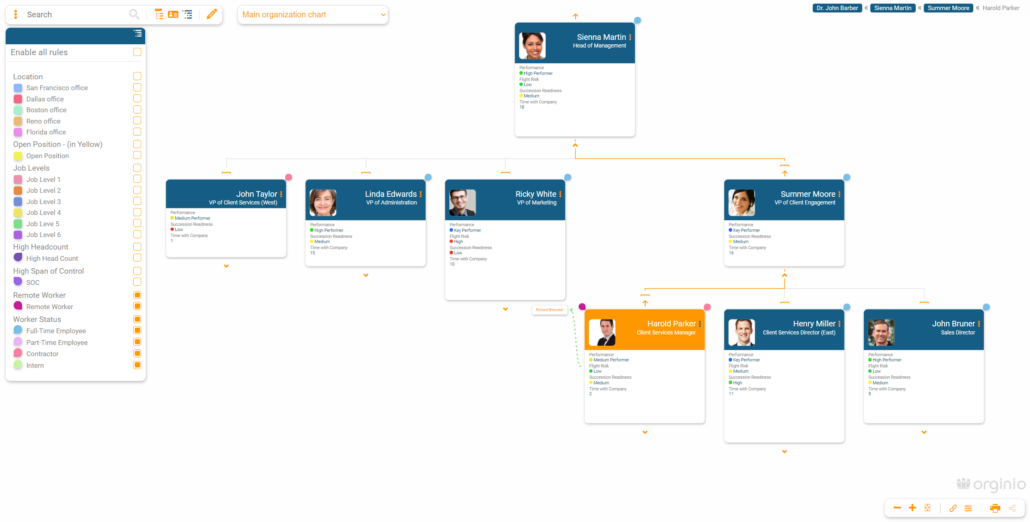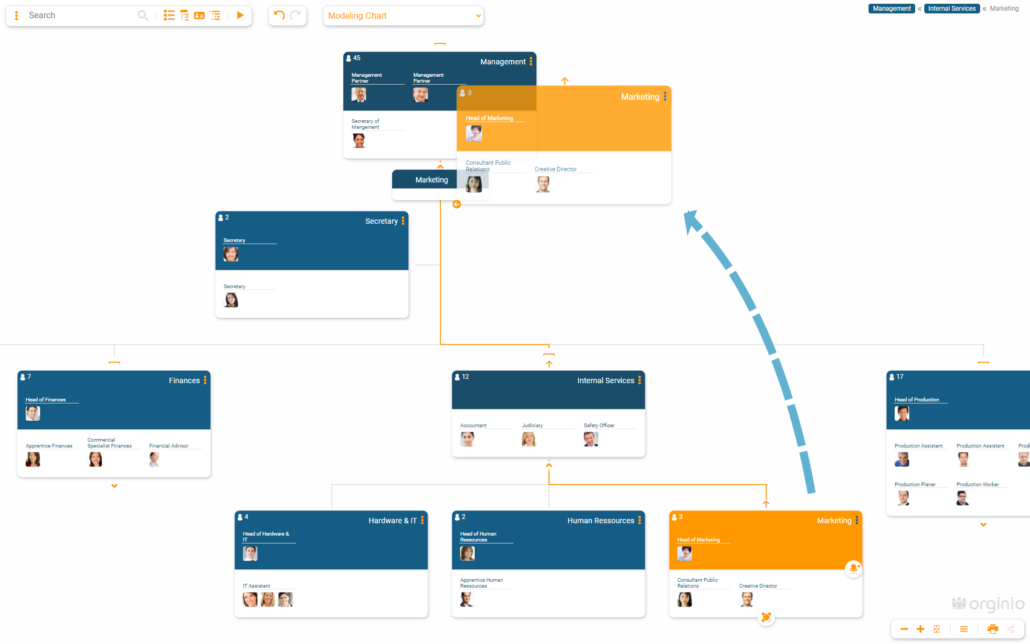Better planning of future scenarios – Workforce modeling with orginio
Companies are frequently required to adapt to changing conditions in order to become and stay successful. This is true today maybe more than ever. While these adaptations are certainly not always about the organizational structure, structural modifications are something many businesses see themselves confronted with on a regular basis.
Reasons for that are manifold: They include reorganizations, mergers and acquisitions, the need to reduce or increase workforce, or the creation of new business units. Even though any structural change is done with a particular goal in mind, it is often hard to predict their actual outcome. This is where software comes into play.
What-if scenarios based on the status quo
orginio lets you create what-if scenarios based on your current organizational structure. It enables you to set up five separate sandbox environments in which you can easily model potential future scenarios. Change or delete existing objects or create new ones and move them to another place in the hierarchy simply via drag-and-drop. This way you can easily build an alternative picture of your company.
But there is more: All key metrics which you have included in your org chart are updated automatically during the modeling process allowing you to immediately see the consequences of modifications made. Since neither the original org chart nor your HR data is changed by the modeling activities, you can also easily compare the status quo with your what-if scenarios. This provides you with a great basis for discussions about necessary reorganizations.
Display rules for informed decisions
Just like for your main org chart you can define individual display rules also for your modeling charts. This helps you focus on aspects that are particularly important for the current reorganization project.
For instance, if you need to create a new business unit and want to see at a glance who of your employees already has the necessary skills and experience to take on a position in this unit, you can create a display rule that highlights only those who do. Another example would be to emphasize on executives with a high span of control to examine whether there is need for action to not place too much responsibility on individual executives.
These are obviously just two examples, there are countless other options when it comes to display rules allowing you to make truly informed decisions in the course of reorganizations.







